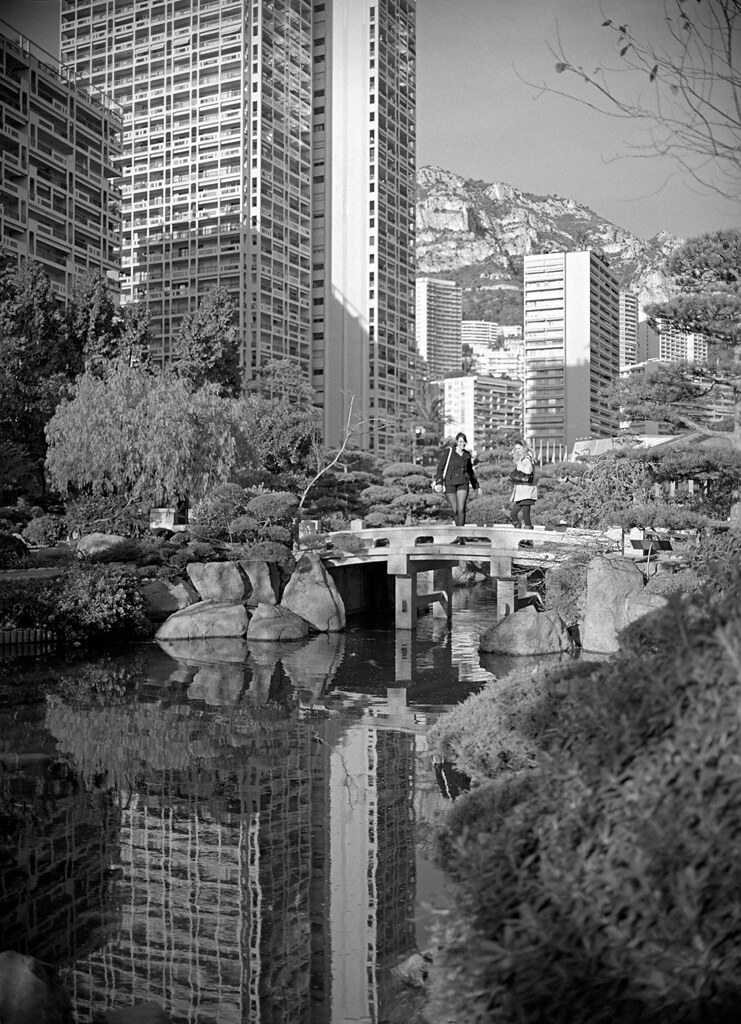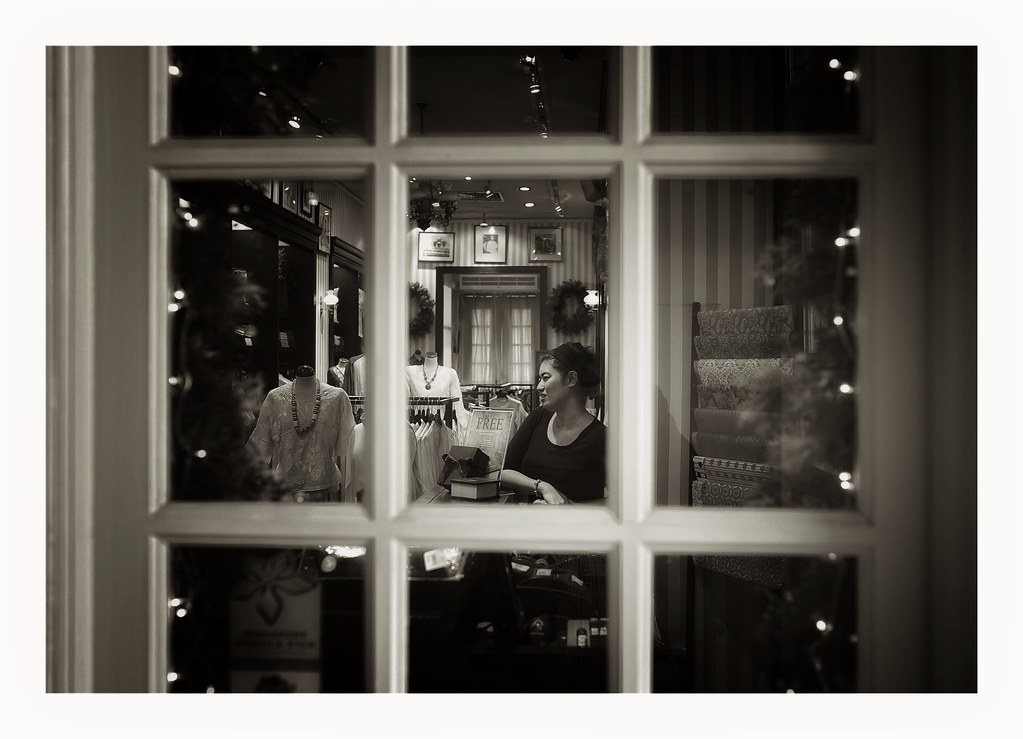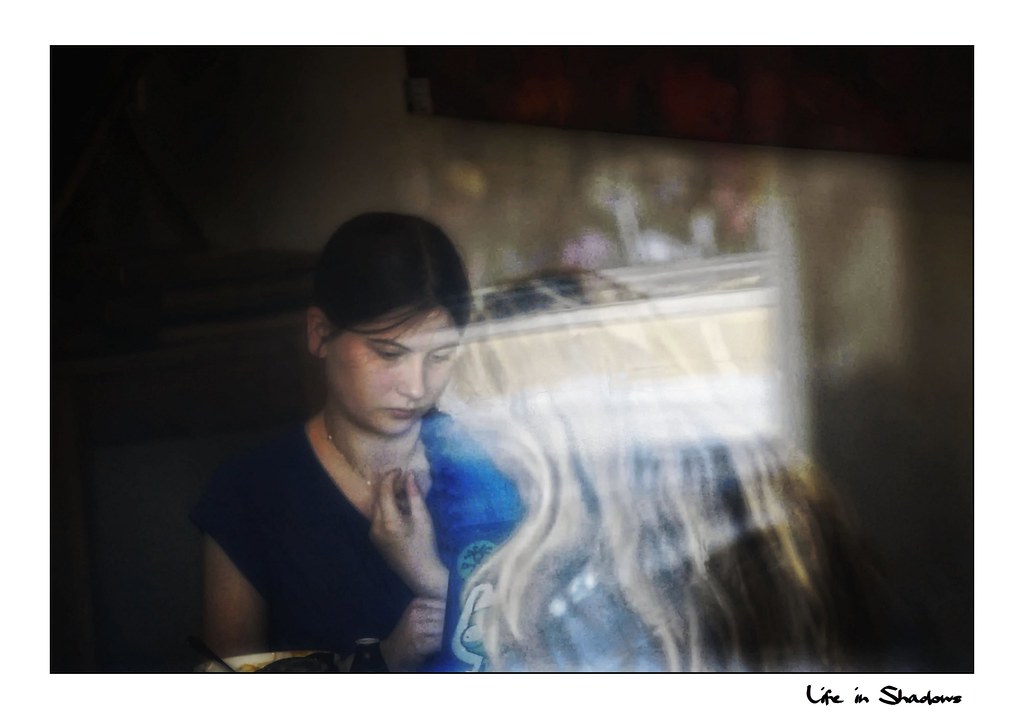lawrence
Mentor
Does vignetting annoy you? Is there any place for a lens that vignettes? Any other thoughts about vignetting?
2WK
Rangefinder User
In the Julius Shulman documentary there is a scene where Julius is arguing with his assistant about vignetting that is pretty funny. His assistant is saying something like, "oh this lens is great because it has zero vignetting"
Julius: "oh well I always use vignetting"
His assistant is kind of shocked: "oh, I NEVER use vignetting!"
Julius, getting annoyed...ends the conversation: "That's why people like my pictures!"
Julius: "oh well I always use vignetting"
His assistant is kind of shocked: "oh, I NEVER use vignetting!"
Julius, getting annoyed...ends the conversation: "That's why people like my pictures!"
summar
Well-known
You can see vignetting on the upper corners of some of Eugene Atget's photographs, probably because the lens he used didn't have enough coverage for front rise. He printed full-plate and sold his prints to painters etc., so he didn't care -- the artist wouldn't include it. When I accidentally get vignetting (shift lens on 35mm shifted too far, wrong lens hood) I sometimes leave it in the print when it's effective, sort of like burning in the corners.
Of course Atget was one of the great photographers and I see the vignetting as an interesting indication of the old-fashioned, limited equipment he used.
Of course Atget was one of the great photographers and I see the vignetting as an interesting indication of the old-fashioned, limited equipment he used.
Sejanus.Aelianus
Mentor
Of course Atget was one of the great photographers
I fail to see where the "of course" comes in. In my opinion, many of the photographers working locally in Britain, at the same time, are much better both technically and in content.
As to vignetting, it was quite common for photographers to add soft fades to white by using a circular or oval mask over the main subject, particularly in the case of portraits. I suspect that the fashion came about as a disguise for vignetting caused by lenses that had too small a coverage for the format in use.
mfogiel
Mentor
Vignetting is a way of saying, that the lens you have is actually not fit for the format it's sold for. Having said that, I actually like some lenses that vignette, because I have been conditioned to dislike pure white corners in my photos. One of lenses I really like, is the Pentax 645 55/2.8 lens, that really vignets significantly when shot wide open, even on B&W film.

MF20130113 by mfogiel, on Flickr

MF20130113 by mfogiel, on Flickr
Matus
Well-known
Only special design lenses can be made 100% free of vignetting (like the photolithography lenses which are tele-centric) - and NONE of these are photographic lenses. There is the light fall-off because of the geometrical effects and there is mechanical vignetting. The first is physics and will always be there and the second is result of a trade-off between cost, size and optical performance (lens that mechanically vignettes wide-open may have actually bette optical performance than one with the same design that does not).
Only time when I really object vignetting up to very last bit of it is when I am trying to make stitch-panoramas. Otherwise a little of it mostly adds to the image. Too much of it usually does not.
Only time when I really object vignetting up to very last bit of it is when I am trying to make stitch-panoramas. Otherwise a little of it mostly adds to the image. Too much of it usually does not.
back alley
IMAGES
i think it can sometimes frame/focus an image nicely...
Rodchenko
Olympian
i think it can sometimes frame/focus an image nicely...
Well, that's it, really, isn't it? Not much more to say. Sometimes, it's OK; sometimes distracting.
f16sunshine
Moderator
Vignetting and softness at edges... what's not to like?
Not for every image but occasionally it makes something out of nothing to have flaws.
Of course not all will agree but I like it.
Canon ltm 50mm f1.2 at wide open and near infinity.

Not for every image but occasionally it makes something out of nothing to have flaws.
Of course not all will agree but I like it.
Canon ltm 50mm f1.2 at wide open and near infinity.

helen.HH
A smile & a wink…
Hah to those that say 'Vignetting is a Flaw'
For Me it Adds Character, Atmosphere and takes you a step out of The boring hundrum of Reality
Hats off to 21 Super Angulon...a Classic Design, Vignetting & Fall off at its Best
For Me it Adds Character, Atmosphere and takes you a step out of The boring hundrum of Reality
Hats off to 21 Super Angulon...a Classic Design, Vignetting & Fall off at its Best
charjohncarter
Mentor
I wish they made a vignetting filter. Those software programs are not good. Here is a 28mm Pentax Super Takumar that I like for it's vignette:
Just a hint of vignette:

Just a hint of vignette:

thegman
Mentor
i think it can sometimes frame/focus an image nicely...
Yes, I think that sums it up. Adds a natural, subtle border to a frame, and sometimes will pleasantly darken a sky rather than it be washed out.
I'm happy to have a lens that does it, but would never add in post.
jippiejee
Well-known
Large planes of the same flat colour towards the edges can be a tad boring... I like adding a little vignetting sometimes.
teddy
Jose Morales
Sometimes I emphasize vignetting in my images to put some "focus" on the subject. I like it.
Leica M2, Leitz Summicron 50/2 DR (1965), Fomapan 100, Rodinal 1:100, 60 mins Semi stand

Leica M2, Leitz Summicron 50/2 DR (1965), Fomapan 100, Rodinal 1:100, 60 mins Semi stand

noisycheese
Normal(ish) Human
I like vignetting that is a byproduct of lens design, such as the vignetting caused by an f/1.0 Noctilux. Photoshop vignetting just never looks right IMHO.
Joosep
Well-known
Monochrom
Well-known
Very interesting thread.
In fact i prefer lenses that vignette because that means a small front optical element which means less focus shift.
I´ve been studying focus shift for a long way and there is a relation between this frustrating flaw and larger front elements...no mystery when you understand how FS and vignette work.
BR
In fact i prefer lenses that vignette because that means a small front optical element which means less focus shift.
I´ve been studying focus shift for a long way and there is a relation between this frustrating flaw and larger front elements...no mystery when you understand how FS and vignette work.
BR
charjohncarter
Mentor
Very interesting thread.
In fact i prefer lenses that vignette because that means a small front optical element which means less focus shift.
I´ve been studying focus shift for a long way and there is a relation between this frustrating flaw and larger front elements...no mystery when you understand how FS and vignette work.
BR
For us on Earth, would it be possible to elaborate on this subject. Or maybe clue us to a work that simply explains FS and Vignettings relationship. Thanks for the post.
peterm1
Mentor
Vignetting does not bother me. If I don't have it - I often add it in post. Its an old photographers trick to add a vignette to focus the eye on the subject.
Usually it should be subtle...........................

Fiefy by yoyomaoz, on Flickr
But I don't mind going over the top a bit as quite often that works too..............

At Raffles by yoyomaoz, on Flickr

Through a glass darkly 10 by yoyomaoz, on Flickr

Chiaroscuro in a hood by yoyomaoz, on Flickr
Usually it should be subtle...........................

Fiefy by yoyomaoz, on Flickr
But I don't mind going over the top a bit as quite often that works too..............

At Raffles by yoyomaoz, on Flickr

Through a glass darkly 10 by yoyomaoz, on Flickr

Chiaroscuro in a hood by yoyomaoz, on Flickr
Ko.Fe.
Lenses 35/21 Gears 46/20
Me likes winegetting. A lot.
Share:
-
This site uses cookies to help personalise content, tailor your experience and to keep you logged in if you register.
By continuing to use this site, you are consenting to our use of cookies.


